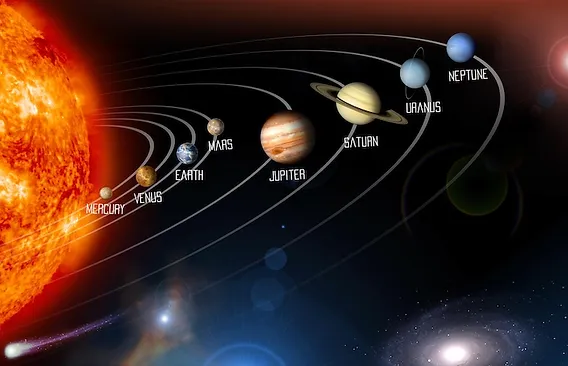5 to 7 Billion Years From Now: The Red Giant Phase Begins
- The Sun, running out of hydrogen and helium, will swell into a red giant, expanding to 256 times its current size.
- As the Sun grows, it will engulf Mercury and Venus, sweeping through the inner solar system.
5 Million Years After the Red Giant Formation
- Carbon dioxide levels plummet due to the extreme heat, halting photosynthesis.
- Plants will die, leading to a chain reaction that causes the extinction of mammals and birds as oxygen levels drop drastically.
- Oxygen-independent creatures, such as certain microbial lifeforms, will survive temporarily.
Earth’s Increasing Heat and Atmosphere Loss
- Rising temperatures kill off insects, leaving tardigrades as the last survivors.
- Earth’s temperature will exceed 2,400 K (2,130°C or 3,860°F), causing excessive rains, winds, and atmospheric depletion.
- The surface will turn into a barren wasteland of metal and oxides, devoid of life.
- Oceans evaporate, leaving behind a lava-covered surface. Without water, tectonic plates cease to move.
7.6 Billion Years From Now: Earth’s Final Moments
- Earth and the Moon will likely be engulfed by the Sun’s red giant phase, marking the planet’s end.
- The Sun’s expansion pushes the habitable zone outward to the Kuiper Belt, far beyond Neptune.
A New Habitable Zone in the Outer Solar System
- As icy worlds in the Kuiper Belt warm up, liquid water may form on moons like Triton (Neptune’s moon) and dwarf planets like Eris.
- Humanity, if still existing, might establish colonies in these regions to ensure survival.
1 Quadrillion Years Later: The Sun’s Final Phase
- The Sun will transform into a black dwarf, a cold, Earth-sized remnant of its former glory.
- The once-luminous star that supported life will become a dark, lifeless body.
This chilling timeline reminds us of the transient nature of planets and stars, highlighting the need for space exploration and colonization to ensure humanity’s survival in the distant future. While Earth’s fate is sealed, the possibility of adapting to new habitable zones in the outer solar system offers a glimmer of hope.



